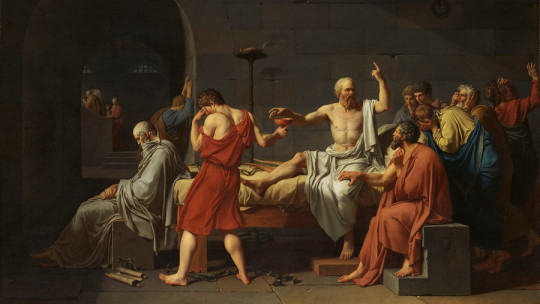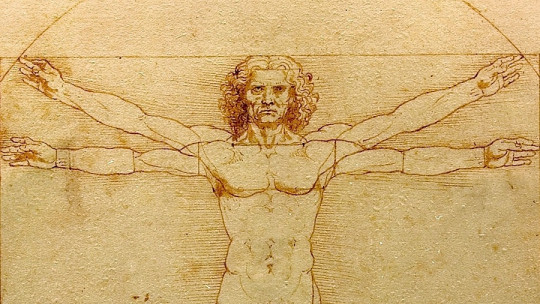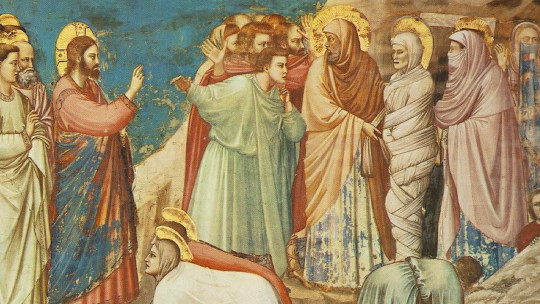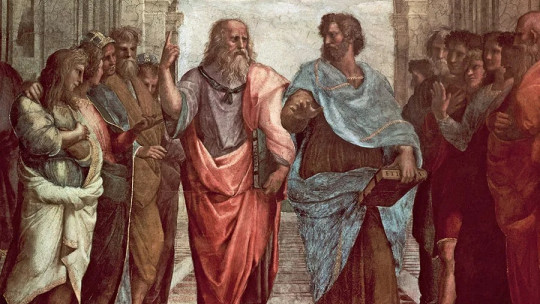During the Middle Ages, a doctrine known as theocentrism prevailed, which established that the entire universe had been created by a deity, but this perspective was relegated to the background by those who followed a doctrine that had emerged at the beginning of the Modern Age, anthropocentrism.
Anthropocentrism is a philosophical doctrine that gives special prominence to the human being, placing him at the center of the universe, so that everything else is subordinated to the needs and interests of humanity.
We’ll see now What is anthropocentrism and what are its fundamental characteristics
What is anthropocentrism?
Anthropocentrism consists of a philosophical doctrine that places human beings at the central point of interest in reality and, therefore, it has an ethical and moral conception that always puts people’s interests above any other matter.
In that sense, other living beings are subordinated to the needs, benefits and well-being of human beings. Likewise, anthropocentrism places human beings as the reference point and measure of all things in the field of epistemology
This philosophical current is credited with a great proliferation of universities in order to be able to teach their thinking from a humanist intellectual model and, in this way, expand it.
The main characteristics of anthropocentrism
In this section some of the main characteristics of anthropocentrism as a doctrine will be briefly explained.
1. Reason versus faith
From the vision of anthropocentrism, rationality takes on special prominence, being applied in the study of all kinds of subjects From reason, the objective is to understand the world through an analytical perspective based on observation and studies in this regard.
This anthropocentric perspective, based on reason, opposed the theological approaches of theocentrism.
2. Great importance of science
From the anthropocentric vision, science gains special value, so that Different scientific branches emerged such as biology, physics, anatomy, astronomy, etc
Furthermore, the increase in the number of universities allowed the expansion of knowledge transmitted in different scientific branches.
3. Location of the human being in the center of the universe
As mentioned previously, under the prism of anthropocentrism, the human being is placed at the universal center, leaving aside the ideas of theocentrism that placed a God in that position
Therefore, from the vision of anthropocentrism, the human being is conceived with the ability to transform and dominate nature, so that there is blind trust in everything that is the result of human invention.

4. Great interest in knowledge and discovery
As we can see, at this time the desire for learn more about the world from different perspectives For this reason, science regains great importance, universities proliferate and the desire to discover new territories emerges, which was a boost for commercial relations and the economy.
5. Rejection of beliefs related to the divine or supernatural
From the anthropocentrist doctrine there is a rejection of everything that cannot be studied and contrasted empirically so everything that belongs to a theological approach is left aside.
6. Importance of social prestige
In anthropocentrism, a lot of importance is given to power, fame and wealth which together give social prestige to the person who owns them above those who are in a lower social rank.
7. Classicism movement
With anthropocentrism and humanism, the Greco-Roman tradition is taken up by ancient Greek philosophers such as Plato, Aristotle, and classical writers such as Tacitus, Ovid, Virgil and Homer, among others.
This wealth of classical authors led to an epistemological relativism, so that it was no longer considered that there was a single and universal knowledge, but now various currents of thought and knowledge were taken into consideration
The return of Greco-Roman classicism also had a great impact on art, where the theme of the Catholic religion was replaced by the Greco-Roman one, a clear example of this being the painting of Venus made by Sandro Botticelli, which is known as “The birth of Venus.”
- You may be interested: “The 23 auxiliary sciences of History (explained and classified)”
8. Promotion of art
During the time when anthropocentrism emerged there were also an artistic explosion supported by patronage by families and people with great power and wealth who became interested in collecting works of art, as is the case of the Medici family in Florence or Ludovico Sforza, who is known for being the patron of Leonardo da Vinci.
9. Different way of seeing life
Anthropocentrism has a different way of seeing life than theocentrism. Anthropocentrism conceives earthly life as a place of passage in which one must take advantage of every opportunity and try to enjoy every moment as far as possible.
10. Relationship with humanism
This intellectual movement and the doctrine of anthropocentrism are based on a series of common premises, such as, consider the human being as the center of the universe, so that his actions allow him to dominate nature and build his own destiny Man is considered the owner of his own destiny by possessing some fundamental qualities for this, which are the following: reason, freedom and will.
Other common aspects are that humanism and anthropocentrism take up the classicism of the ancient civilizations of Greece and Rome.
For all this and more aspects that they have in common, it could be said that humanism and anthropocentrism go hand in hand.
- You may be interested: “Humanistic Psychology: history, theory and basic principles”
Brief history of its development
What is known as anthropocentrism has its origins in the early Modern Age (16th century) The passage from the Middle Ages to the Modern Age also entailed a change in doctrinal perspective, with theocentrism prevailing in the Middle Ages, which had a philosophical prism that considered a deity as the center of the entire universe; On the other hand, the emergence of anthropocentrism entails a shift of power towards the human being.
This change in doctrinal perspective, brought about by the emergence of anthropocentrism, had repercussions at different levels: moral, ethical, philosophical, social and judicial.
It is also important to highlight that, although the human being was considered the center of the universe, religion was not completely left aside being proof of this that it continues to be abandoned today.
1. Renaissance
The Renaissance era marked the end of the Middle Ages and the beginning of the Modern Age It is a cultural movement that emerged in Italy in the 15th century that influenced various artistic modalities such as architecture, painting and sculpture, and whose name comes from having taken up the Greco-Roman style in works belonging to the period in which this movement took place. motion.
By following a classical Greco-Roman theme, the artists paid special care to the proportions of the figures represented and gave special prominence to the representation of the human body, thus following an anthropocentric vision.
2. Humanism
It is an intellectual movement that emerged in Italy during the 14th century being developed in different disciplines (philosophy, theology, literature and history), and which is also linked to the cultural movement of the Renaissance and the doctrine of anthropocentrism.
The strength that anthropocentrism had gained at that time, by rescuing the Greco-Roman tradition, brought with it the fact of focusing primarily on studying human beings.
Criticisms of anthropocentrism
Anthropocentrism has not been free from criticism, the main one being the fact that consider that everything on earth is on a step of the hierarchy lower than that in which the human being is so that nature and other living beings must be at your disposal.
On the contrary, those who oppose the main idea of anthropocentrism, regarding the human being being the center of the universe, do so because they consider that human beings should not be considered above other beings, defending that all living beings They should have equal rights.
There are other movements that also do not agree with the fact that human beings can use environmental resources at will to obtain some benefit for themselves, considering that they have the full right to do so.
It is because of that In the 70s of the last century, a movement known as biocentrism emerged which considers that all living beings deserve moral respect, without any living being being considered above another, considering the right to life of all beings as a primary value.
With all this, it should be noted that not everything should be black or white, but there are also intermediate terms in which the different movements have common aspects, for which all of them have contributed many values and useful knowledge that last to this day and, Therefore, they have facilitated our incalculable cultural, scientific and biodiversity wealth.









